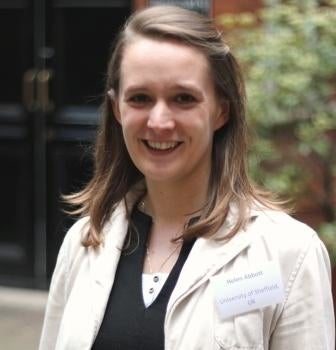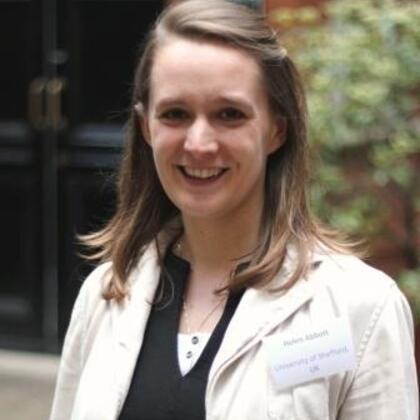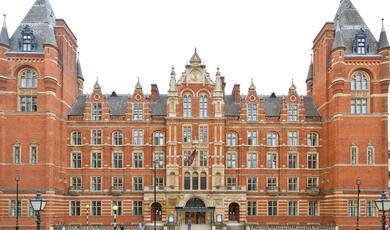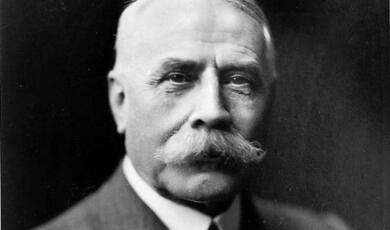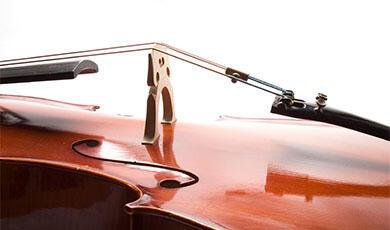Debussy - Text and Ideas: Singing 'Le Jet d'eau'
Share
- Details
- Text
- Audio
- Downloads
- Extra Reading
According to some scholars, Baudelaire’s ‘Le Jet d’eau’ may originally have been written in conjunction with the chansonnier Pierre Dupont as a form of popular song. Whilst no record of any music by Dupont for this poem survives, this lecture sets out to examine what textual features of the poem seem to make it particularly ‘settable’ to music. It explores what happens when Baudelaire’s poetry is sounded out as music through song performance, especially in the 1889 setting by Debussy, but also engaging with the two other nineteenth-century settings of this poem by Maurice Rollinat and Gustave Charpentier.
Download Text
13 April 2012
Singing ‘Le Jet d’eau’
Professor Helen Abbott
Our session today is titled “From Text to Performance”, and it is true that the normal way we approach songs are to start with the text, and work from that to bring it into a performance context. You often hear professional interpreters of Debussy song, and indeed musicologists and literary scholars enjoining singers to start, first of all, by reading the poetic text before even beginning to sing it [S1 / Q1].
les interprètes gagneraient souvent à dire parfois le texte, avant d’y ajouter la mélodie debussyste destinée à la poétiser ensuite.”[1]
And this is often considered to be very ‘sound advice’ (DLS words from 1993!). But, over the past few years, I’ve been learning that it’s not quite that simple – and that is to do, in part, with some of the rather more complex backstories that lead to the development of a “text”, especially when that text is not completely stable. I think there has all too often been a tendency to assume that there is a ‘correct’ way to read a Baudelaire poem, for example - indeed much of the language used by Debussy’s contemporaries (usually singers / interpreters, e.g. Claire Croiza, Jane Bathori, Désiré-Emile Inghelbrecht) talked of “rhythmical precision” that derives from the poetic text itself [S1 / Q2]:
[Debussy] has caught the poet’s rhythm so perfectly that the poem can be delcaimed without changing anything in the rhythm...[2]
...where in fact the poem is never able to be that prescriptive (read Dave Evans’ 2004 book on Rhythm, Illusion and the Poetic Idea). Reciting a poem throws up all sorts of rhythmical challenges and variations, quite apart from anything to do with other sound patternings, elisions, or indeed meaning. So it’s the more recent scholarship that I’m interested in – carried out by people in this room (Bergeron, Feuillerac, from the Musicology camp, and Dave Evans and myself from poetry camp) – because we are exploring how poetic performance practice, if I can call it that, is shaped both by the poetic text itself and by the song material surrounding it. For me, it is by exploring the sounding out of a poem such as Baudelaire’s ‘Le Jet d’eau’ / ‘The Fountain’ which I’ve chosen as my main case study today [S2 & S3], which gives us a new way of approaching singing Debussy. It is a poem which is really interesting in terms of its scope – on the one hand part of the very Wagnerian scope of Debussy’s Cinq Poèmes de Baudelaire, and on the other hand – to use Robin Holloway’s words [S4/Q3], “Le Jet d’eau [...], with its three verses each followed by a refrain, is the simplest in form and in style most premonitory of Debussy’s later songs.’[3]
So looking both backwards and forwards enables us to uncover a history of a poem’s soundworld and sound contexts, which include its v. tight r/shps with the musical, or with song. What I’m essentially going to do today is give a potted history of the poem – looking at both its backstory and its future reworkings/adaptations as song – which I hope will show you why we need to start asking slightly different questions about performing Debussy song. Because I think there is a song already exists behind this all and which I’m not going to call a ‘song-alongside’. And that ‘song-alongside’ stands in relation to all the different performance contexts for ‘Le Jet d’eau’ as both poem and song.
I want to start, then, not with Debussy, but with Baudelaire. But not with Baudelaire as poet, rather with Baudelaire as chansonnier, and to explore why / whether or not there has been a tendency to overlook Baudelaire’s early work as a lyricist (unlike studies on Gautier which look carefully at Gautier’s engagement with writing song lyrics vs. poetic texts, or studies on Verlaine which look at his close relationship with composers). One of the few scholars to have touched in any detail on Baudelaire’s engagement with popular song is Graham Robb, who writes of Baudelaire’s attitude towards popular song, especially in the early stages of his career as poet [S4/Q4]:
Contrairement à la plupart de ses contemporains, le jeune Baudelaire n’établit point de distinction nette entre chanson et poésie. [...] Baudelaire, de plus, et loin de penser que la chanson n’est qu’une gaieté niaise.[4]
As Brigitte Buffard-Moret has suggested, the major poets of the nineteenth century in France, from Hugo to Baudelaire, to Verlaine and Laforgue did not perceive a pronounced aesthetic distinction between the apparently popular, lowbrow chanson and their poetry [S4/Q5]:
Les poètes du XIXe siècle qui ont été les grands acteurs du renouveau poétique ne traitent [...] pas la chanson comme une forme mineure.[5]
We know that Baudelaire’s first ever published text was not a poem, but a song – in fact a parodic song based on Béranger’s ‘Le Roi d’Yvetot’, and written in collaboration with Gustave Le Vavasseur in 1844.
Against this backdrop, during the early stages of his career, Baudelaire was moving in circles which included a number of light composers.
If we take the example of ‘Le Jet d’eau’, we have some tantalisingly sketchy evidence that the poem in fact started out life as a song – so its pre-publication history in the 1850s is as follows [S5]:
1853 ms. (I’ve not got hold of it, not sure if I can...) has a musical score ‘chœur’ in the hand (allegedly) of light composer Victor Robillard. Was it written in collaboration with B? Did the song exist already, and B merely write some words for it?
mid-1850s. There is another hypothesis that this poem written in collaboration with, or at the very least in response to, Pierre Dupont, the chansonnier who B admired and about whom he published 2 critical texts during the 1850s & 60s, one which serves as a ‘Notice’ to the 1st volume of Dupont’s C&C (1851), and the other from 10 years later (1861) in the Revue fantaisiste which specifically draws attention to Dupont’s ‘Le Promenade sur l’eau’ (B.OC.II, pp.173-4) as a song in which ‘le poète chante, avec un accent délicate et voluptueux’ [S6].
Charles Maurras claims that this ‘Prom. sur l’eau’ has very strong resonances with B’s ‘Le Jet d’Eau’. (Song / chanson form, with refrain structure (although different metre), similar aqueous imagery, link between love of a woman and watery scene). But I think the links are a bit tenuous, and I think the dates might be a bit unhelpful, but I’m not going to go nit-picking around that for now. Pichois hypothesises that maybe Dupont was going to set B to music in his Chants et chansons (this was promised for the 4th volume, alongside settings of Hugo too), but nothing materialised – or at least none of the texts in the 4th volume of PD’s C&C are Baudelaire’s (and I’ve not yet been able to get any of the tunes to fit ‘Le Jet d’eau’). I checked whether you could sing Le Jet d’Eau to the melody of ‘Le Promenade sur l’eau’, but you can’t (in part b/c metre of the refrains is wrong, in part b/c of where the musical accents fall in r/n to the metrical ones)... Dupont was apparently not a very great composer/musician, some scholars suggest that someone else had to actually do the musical notation for him (he just invented the melodies). But his ideas about popular song are resonant. In his preface to Vol.1 (1851) of his C&C (coming just after B’s Notice on PD in the same volume) Dupont asks the question [S7/Q6]:
Quels sont les airs qui restent populaires? Ceux qui réveillent les plus vifs sentiments d’amour, de liberté, d’indépendance [...]; les sentiments intimes assez vrais pour vibrer dans tous les cœurs purs. (p.20).[6]
What is telling about Dupont’s comments here are his insistence on strong ‘sentiments’ that get all hearts vibrating, irrespective of the actual language used – and these sentiments stay with us; in Dupont’s terms, they “restent populaires”, and that is not necessarily a negative reflection of how song functions. They stick with us because they strike the right chord. And – here I’m going to be a bit bold – this gives us a big clue as to why ‘Le Jet d’eau’ ends up being set to music a number of times in the 1880s and 1890s [S8] (there are at least 3 different song scores, and quite a number of textual reworkings, including a Laforgue parody, themselves a form of song). And for me, the decision by composers to set ‘Le Jet d’eau’ to music comes not because the poem is somehow ‘musical’ but because its soundworld sticks with us, it creates the enduring, vibrating sentiments that last, no matter which version of song it is performed as...
So how should we sing ‘Le Jet d’eau’? Well scholars have already dealt with precision vs. imprecision, declamation, reading the poem first. Also singing styles / techniques (melodic rubato, portamento etc.). But fail to take into account different schools of declamation. And different versions of the text and what ends up being set to music.
So rather than talk about the technical specificities of performing Debussy’s vocal works, I want to look at performance contexts and what these tell us about singing Debussy – that means class and gender issues – elitist vs. non-elitist (so political dimension) – but most of all, the aesthetic agendas behind all this. This popular song context that I’ve touched on briefly is, I think, telling, because when Debussy comes to set Baudelaire to music between 1887-1889, he is still in the early stages of his career as song-writed (he’d just composed the Ariettes oubliées on Verlaine’s texts), and he creates his settings at precisely the time when composers are exploring the relationship between chanson and mélodie. And this is why I want to situate Debussy’s 1889 setting of ‘Le Jet d’eau’ in between two other settings of the same poem:
Maurice Rollinat’s 1883 setting (not published til 1890)
Gustave Charpentier’s 1890s setting (published in 1895)
Performance contexts:
Rollinat [S9]: which was being performed by the composer (a pianist and lyric bass) at the Chat Noir café-concert. (self-accompanying – a relatively simple song, as e.g. the refrain [S10] demonstrates. The verses use typical Rollinat technique of alternating between major and minor, and there is no variation – refrain repeated exactly the same each time.
Debussy [S11]: in private chez Chausson in 1890 (we don’t know who the singer was – male or female?), then first public performance of Debussy’s Baudelaire songs was not until 1903 – Victor Debay, critic and singer performed ‘Le Jet d’eau’ and ‘Recueillement’ in Lyon[7], then another performance in 1905 Mme Camille Fourrier accompanied by M. Delacroix at the Théâtre des Mathurins, Paris 15 May 1905.[8]
Charpentier [S12]: don’t know details of première, but we know Charpentier was working towrads setting up his Conservatoire populaire de Mimi Pinson for working-class women at this time, and given the nature of his setting, it seems that this was its likely performance context. In some respects, given Charpentier’s ‘improving’ project for these women (fuelled by his socialist rhetoric which is nonetheless tempered by a patriarchal attitude – he’s progressive but not that progressive), it is rather perplexing that he had them singing ‘Le Jet d’eau’. After all, it is not a neutral poem. It doesn’t just describe a pretty-sounding fountain and the way it reminds him of his love for a woman: it is almost overtly erotic, or at the very least intensely sensual, and not the kind of ‘neutral’ or ‘naive’ poem that you might expect to be more appropriate / suitable for such women to sing... What Charpentier’s setting does do, however, is reveal a very different scope to this poem-as-song. [S13] It creates a far less intimate performance space and soundworld – we hear multiple voices (even in collective singing of the refrain) .
BUT the performance trajectory is in fact more complext than this:
From private to public, from small-scale to large scale, from elitist/bohemian/bourgeois in-the-know audience to more amateur performers and audiences
There are textual variants – Debussy chooses to set a completely different version of the refrain from all the other standard published versions
SLIDE WITH DIFF REFRAINS [S14 – and flick to S15 – then back to S14] – you can’t sing standard refrain to Debussy’s song. He’s the only composer to do this, so we have to assume he had access to the Petite Revue version, BUT he changes one word, and it’s a word that pertains to the language of sensory imagery (‘lueurs’ becomes ‘pâleurs’ – perhaps not a radical change in meaning, but a significant change in sound; and I suspect that is why D did it (as in, I don’t think we’re missing another vesrion of the ms., as Pichois wonders). ‘Pâleurs’ is far easier to pronounce when sung than ‘lueurs’, so Debussy changes the sound to foster his music. (It’s not the first time Debussy does this – but all the changes are very minor / subtle ones, and they are mostly in the Verlaine settings that others can talk more knowledgeably about than I can). What Debussy’s choice of refrain reveals, however, is that although both versions of the refrain have the same metrical line lengths, they each require a different scansion. [S16] By which I mean, the refrain Debussy selects demands a more of an enjambement than the standard refrain doesn’t, or at the very least that you read it with one breath. Or, if you’re not convinced by that, very simply you cannot sing the standard refrain words to the vocal line that Debussy has written because the stresses or accents fall in the wrong place – for example you would have an extended note value on the second, third, fourth (and fifth, as the sung mute e is pronounced) syllables of “épanouie”.
In 1907 Debussy then orchestrates his setting of ‘Le Jet d’eau’ even though he was (as per letter to Caplet) rather resistant to this idea. [S17/Q7] DLS comment “as if, perhaps, it was too important to be confined to the recital room”. But these are exactly the kind of comments we hear about Charpentier’s mélodies: [S17/Q8] Françoise Andrieux ‘la mélodie de Charpentier semble échapper au domaine de la mélodie’. First perf. of orch. version at Concerts Colonne, 24 Feb 1907. Orchestration then revised by Caplet after Debussy’s death (the version often heard now).
There is a complex relationshp here between the ‘intimacy’ of the poetic text, and of its first contexts, and the broader scope of its later versions. This is further complicated by the personal/professional relationships (not always uncritical) between Rollinat, Debussy, Charpentier, who we know hung out together in venues such as Chez Thommen (Lesure) and the Brasserie Pousset in the rue Châteaudun (Orledge)[9]. But we also know that Debussy wrote scathingly of Charpentier’s populist streak [S17/Q9] – especially in his music (e.g. Deb writing in a February 1893 letter to prince André Poniatowsky that “c’est comme on pourrait dire le triomphe de la Brasserie”.[10])
So, what I’ve tried to do is something a bit different from what has been the typical approach of many Deb scholars – i.e. a tendency to deal with D’s choice of poems in isolation / or only in relation to the other poems of a set, rather than looking at the broader soundscape/performance context of each of the poems D set to music. I obviously don’t have time today to do more than just one example, but I hope that by setting out the whole scope of textual, intertextual and intermedial material surrounding ‘Le Jet d’eau’ we can see that there is a whole (textaul / poetic) backstory to, as well as a range of future reworkings of the poem that inform Debussy’s work in terms of what it means to sing – can a text sing without music? What is song? What kind of song is it?
My emphasis on sound, soundworld, soundscape is because I think what is at stake is that we need to listen carefully, and to listen for the sake of sound, rather than for the sake of ‘meaning’. When we listen to Debussy for the sake of sound (as Mark De Voto has explored), we find distinctive patternings and clusters that create his soundworld. In ‘Le Jet d’eau’ that means a significant emphasis on major seconds, ninth chords, whole tone scales – which distinctive, even if they are borrowed, in part, from Borodin. When we listen to Baudelaire for the sake of sound, we find that he not only enjoins us to ‘écouter la plainte éternelle’ of the fountain in the final stanza of the poem, but also to an eternal song which can be heard if we listen out for it.
Baudelaire’s engagement with the sounding out of his poetry (not just the sound of his poetry, or indeed the relationship between sound and sense) but the act of making his poetry sound, and of making his poetry sound as music that sears it in our sensory memory and preserves it for future generations, or to use Baudelaire’s own words when he writes of Dupont’s songs: these songs are [S18/Q10]:
‘destinés à se graver éternellement dans toutes les mémoires’ (B.OC.II, p.175).
Whilst Baudelaire is possibly deploying a slight touch of hyperbole here, his emphasis on how the relationship between poem and music makes Dupont’s songs forever memorable points towards a concept that is only recently attracting any serious critical attention. Recent work by the Word/Music scholar Lawrence Kramer has begun to explore the idea of ‘Speaking Melody / Melodic Speech’. In a 2005 essay, Kramer seeks [S18/Q11]
to conceptualize a familiar but little-studied phenomenon, the intermediate form of expression between song and speech that arises when a melody associated with words is sounded without the melody being sung.[11]
Kramer calls this ‘speaking melody’ and suggests that there is also the other side of the equation, ‘melodic speech’:
Once words have been joined to a melody, the words seem to saturate the music so that the music can voice them afterwards even in their absence.[12]
The absence of words still resonate with a particular melody that was once joined with words, just as the absence of melody still resonates with a particular text that was once joined with music. This, I think, reveals why song is not just a merging or conjoining of words and music: it is something more hybrid, and more porous in terms of the interactions which derive from the sensory sounding-out of the work. The absence of Victor Robillard’s music that (allegedly) goes with Baudelaire’s poem in 1853 doesn’t mean that it resonates any the less for that, and the testimony to that is the numerous other sonorous, musical, song reworkings of the poem that I have explored today. And, whilst I can’t always prove, for example, that Debussy had heard the Rollinat and Charpentier settings of ‘Le Jet d’eau’ – it is highly likely – my point is that the other settings are already heard within Baudelaire’s poem. The same tune can be sung to different possible words, just as much as the same words can be sung to different possible tunes. But there are problems and hiccups along the way, and that’s why it is so difficult to make sense of this inter-sensory material, which is, in and of itself, at once harmonious and discordant.
What, in effect, I’m proposing, then, is a sort-of Mallarméan reading experience – whereby we are expected as readers and listeners to re-read, re-listen all the while suspending and suppressing, and foregrounding and exposing, different musical versions / adaptations of the same soundscape the poet presents us with. We are, then, expected to be careful listeners so that all the songs we actually do hear (or sing) are only ever “songs-alongside”, or – to return to Laforgue’s more explicit version, parodies, which we can understand as para + ode. The sound of the fountain is eternal song, where Baudelaire’s own poem-as-song, is only ever part of a whole series of possible different variations, adaptations and reworkings that sit, parodically, alongside that eternal song.
© Professor Helen Abbott
[1] cf. e.g. Dick Langham Smith on Inghelbrecht “dire le texte avant de le chanter” – “Sound advice!”, Deb in Perf (ed. Briscoe), p.13. Ref. is D-E Inghelbrecht, Comment on ne doit pas interpréter “Carmen”, “Faust” et “Pelléas” (Paris: Heugel, 1933), p.59
And see also Charles Timbrell in Cam Comp to Deb. who talks of Mary Garden, Ninon Vallin, Claire Croiza, Maggie Teyte, Jane Bathori.
[2] Also Dick’s quote, this time p.19 Betty Bannerman, ed., The Singer as Interpreter: Claire Croiza’s Masterclasses (London: Gollancz, 1989), pp.108-9.
[3] Robin Holloway, Debussy and Wagner (London: Ernst Eulenberg, 1979), p.44.
[4] Graham Robb, La poésie de Baudelaire et la poésie française 1838–1852 (Paris: Aubier, 1993), p.248.
[5] Brigitte Buffard-Moret, La chanson poétique du XIXe siècle, p.10.
[6] Pierre Dupont, Chants et Chansons (Poésie et musique), ornés de gravures sur acier (Paris: Alexandre Houssiaux, 1851-1859), 4 vols.
[7] cf. DLS in 19thC Music (CD review)
[8] cf. Margaret Cobb
[9] Rob Orledge, Debussy and the Theatre (CUP, 1982), p.17.
[10] cf. Jane Fulcher, chapter by Christophe Charle
[11] (ORIGINALLY: Word and Music Studies 7, ed. Suzanne M. Lodato and David Francis Urrows, 127-43), now in Lawrence Kramer, Critical Musicology and the Responsibility of Response. Selected Essays. (Aldershot: Ashgate, 2006), p.263.
[12] (ORIGINALLY: Word and Music Studies 7, ed. Suzanne M. Lodato and David Francis Urrows, 127-43), now in Lawrence Kramer, Critical Musicology and the Responsibility of Response. Selected Essays. (Aldershot: Ashgate, 2006), p.264.
Part of:
This event was on Fri, 13 Apr 2012
Support Gresham
Gresham College has offered an outstanding education to the public free of charge for over 400 years. Today, Gresham College plays an important role in fostering a love of learning and a greater understanding of ourselves and the world around us. Your donation will help to widen our reach and to broaden our audience, allowing more people to benefit from a high-quality education from some of the brightest minds.


 Login
Login
